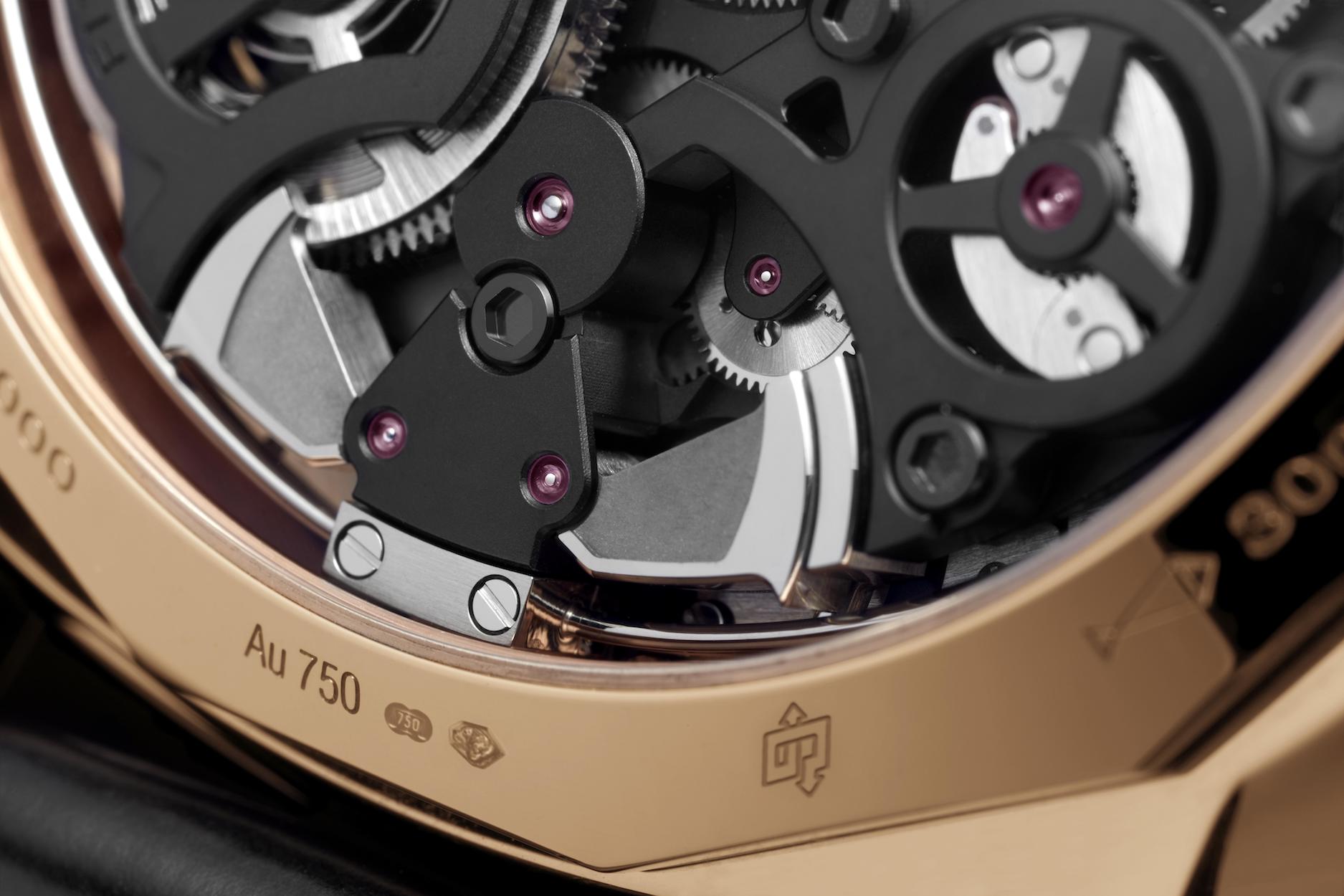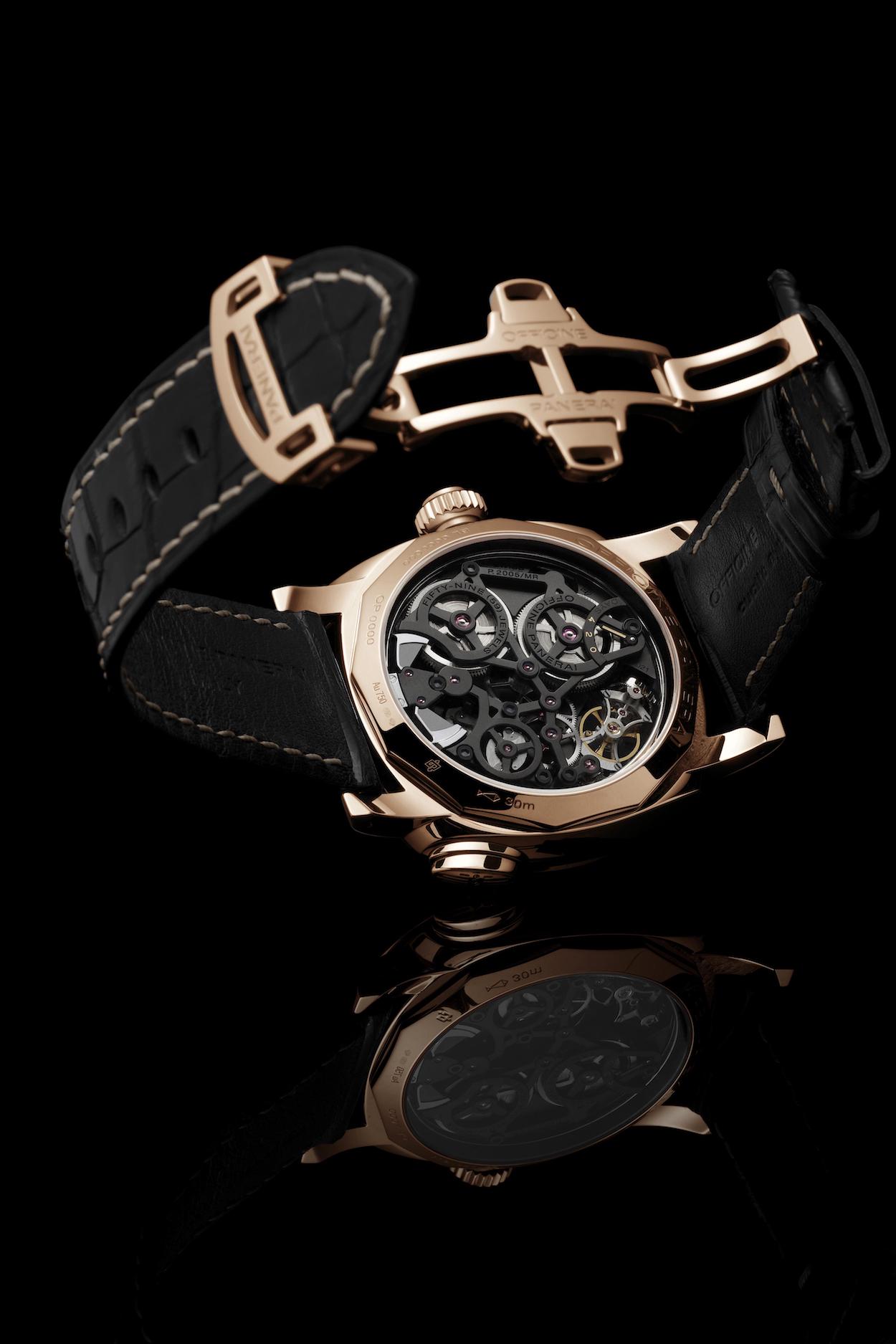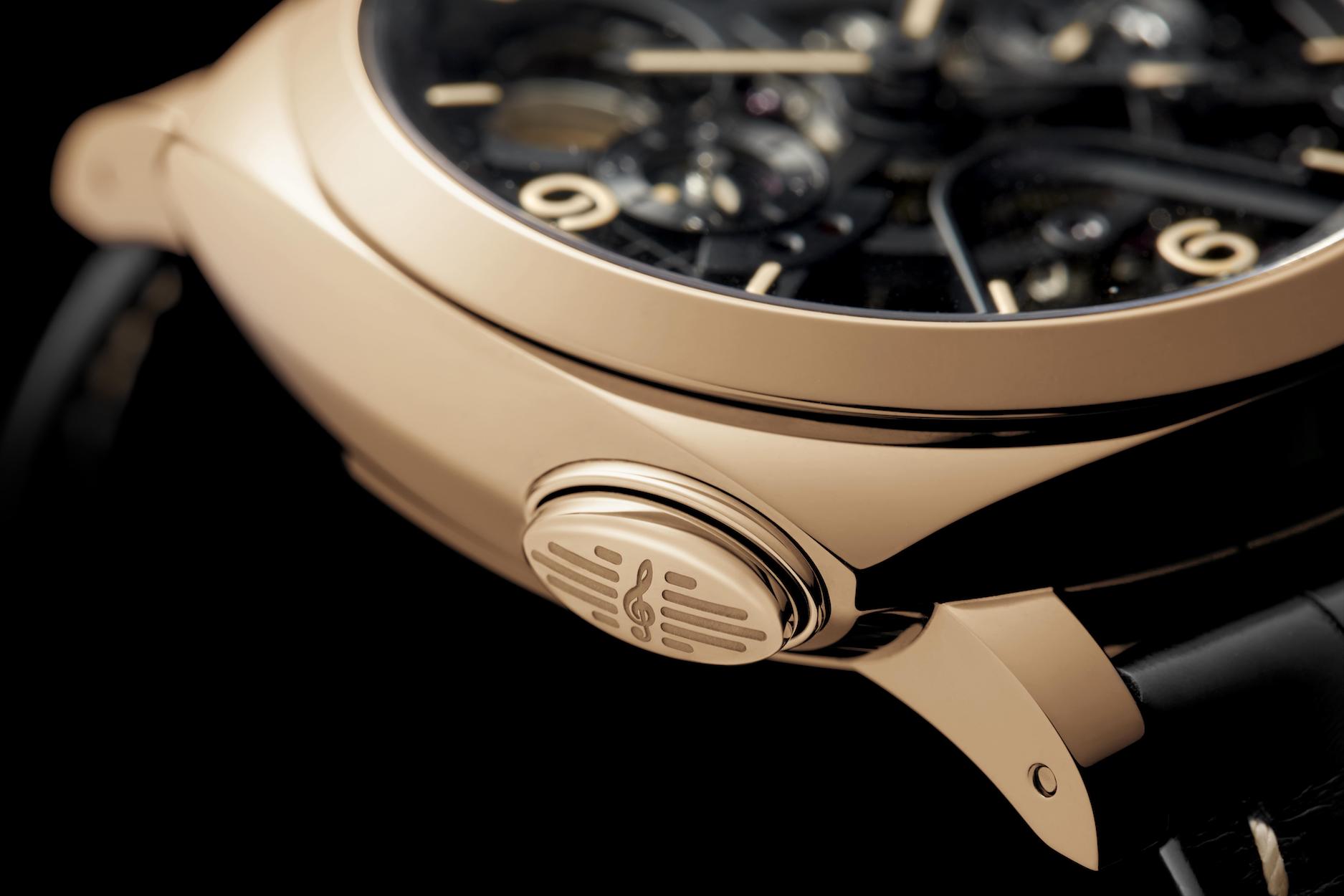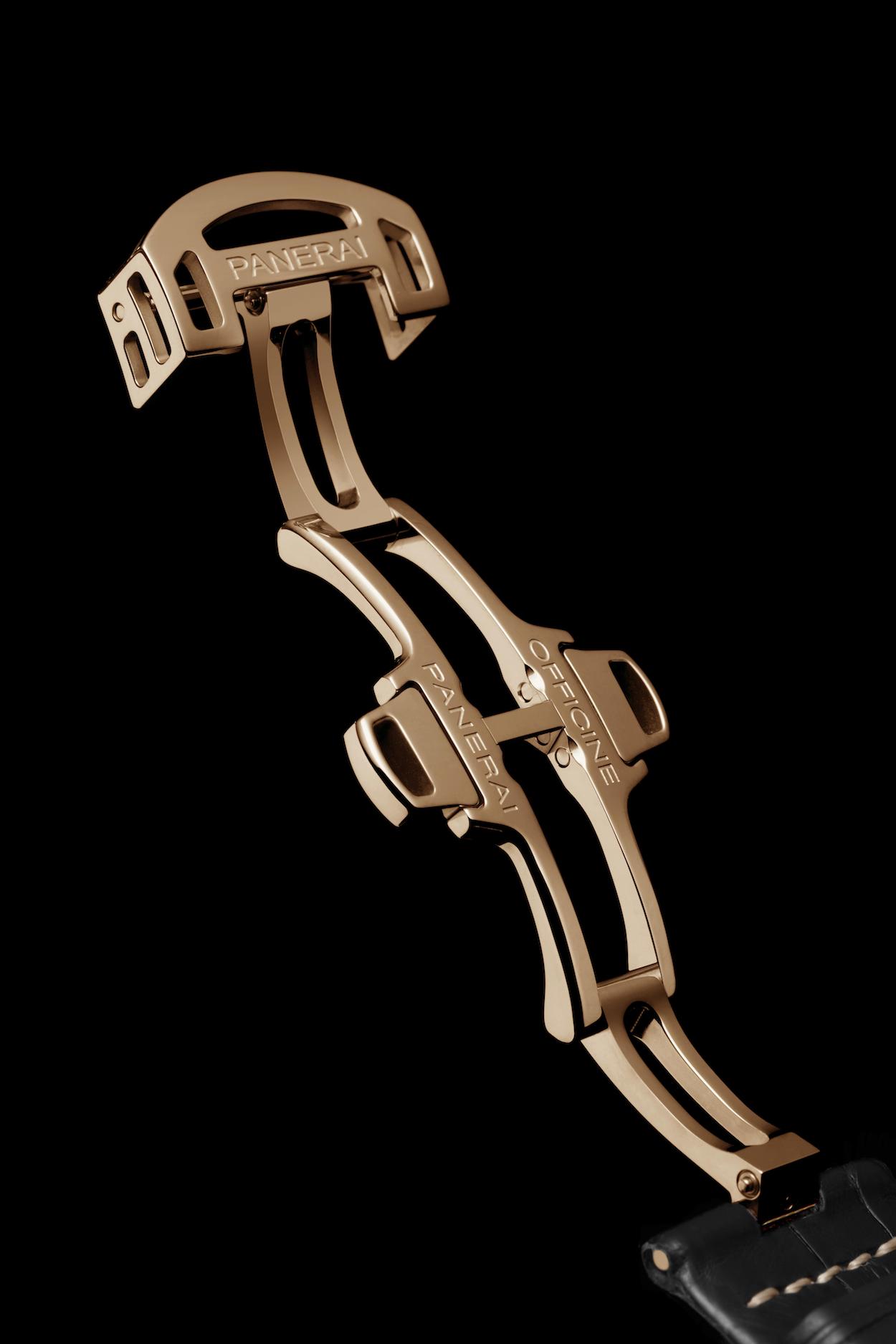Introduced in May of 2016 at Panerai’s “Dive Into Time” exhibition at the Marino Marini Museum in Florence, the Radiomir 1940 Minute Repeater Carillon Tourbillon GMT is the most complicated timepiece Panerai has ever produced.
Let’s start with the minute-repeater mechanism. Not only mastering the complication equivalent to scaling the top of the watchmaking pyramid, Panerai’s version offers a practical, and even more complex, twist: While traditional minute repeaters chime time in 15-minute segments, this model sounds triple chimes of an intermediate note every 10 minutes. The innovation reduces the number of chimes, making it easier to tell the time.
Even more remarkable is the fact that the repeater function can be activated both for local time and for a second time zone, indicated on the dial by the central arrow hand and the a.m./p.m. indicator on the counter at 3 o’clock. Despite the intricate engineering required to enable what is, in essence, a double-hour and minute-repeater mechanism, the functionality remains simple and intuitive.
As if all that weren’t enough, the hand-wound, skeletonized movement also boasts an intelligent take on a tourbillon regulator. Instead of a balance cage that rotates continuously once a minute, canceling out any variations caused by gravity and possible shocks, Panerai’s tourbillon cage rotates every 30 seconds on an axis that is perpendicular, not parallel, to that of the balance—two adjustments intended to bring even more precision to the timekeeping mechanism.
Available on a made-to-order basis, the 49 mm timepiece comes in an 18-karat red-gold case that can be personalized with the client’s choice of strap, hands, and/or case material.
Radiomir 1940 Minute Repeater Carillon Tourbillon GMT, starting around $400,000; panerai.com
(Photos: Courtesy Panerai)







